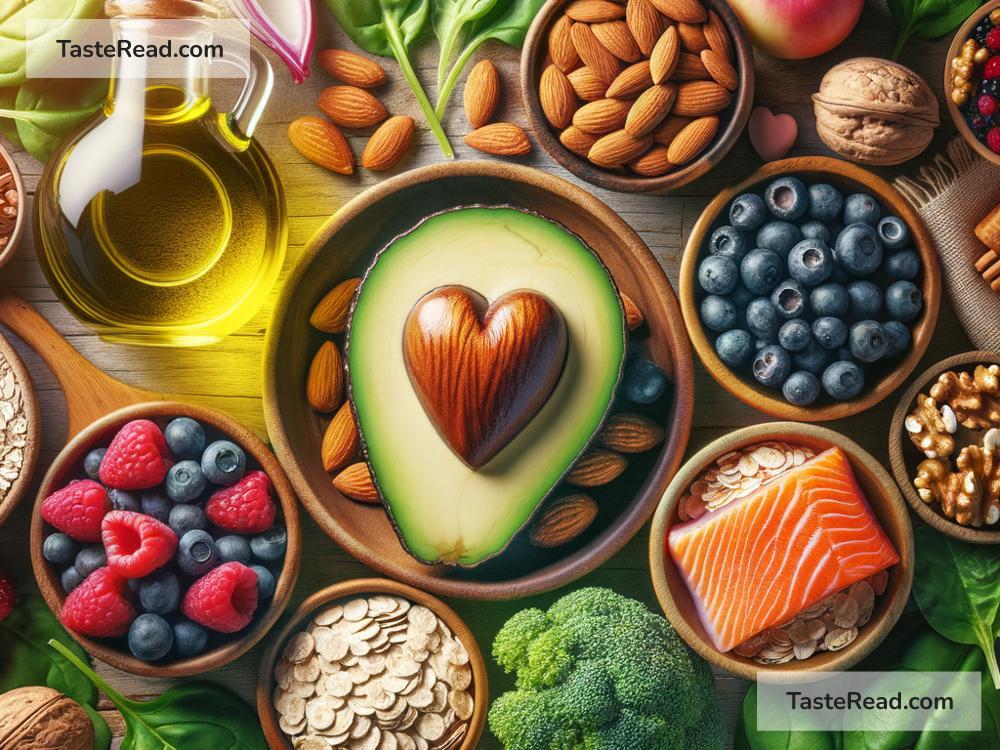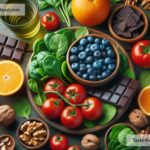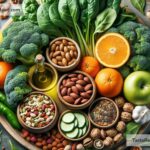Foods That Promote Healthy Cholesterol Ratios
When someone talks about health, cholesterol often comes up in the conversation. You’ve probably heard terms like “bad cholesterol” and “good cholesterol.” While cholesterol itself is vital for your body—it helps build cells and produce hormones—having too much of the wrong kind can lead to heart problems. The key to staying healthy is maintaining the right balance between bad cholesterol (LDL) and good cholesterol (HDL). Luckily, your diet plays a big role in achieving these healthy cholesterol levels. Let’s take a closer look at some foods that can help you keep those ratios in check, using simple language.
Understanding Cholesterol: LDL vs. HDL
Before diving into food choices, let’s break down what LDL and HDL mean:
– LDL (Low-Density Lipoprotein): Often called “bad cholesterol,” high levels of LDL can build up on the walls of your arteries, leading to heart disease.
– HDL (High-Density Lipoprotein): Known as “good cholesterol,” HDL helps remove excess LDL from your bloodstream and carries it to the liver for processing.
For a healthy heart, the goal is to lower LDL and increase HDL.
Foods That Lower LDL Cholesterol (Bad Cholesterol)
The first step toward improving your cholesterol ratios is cutting down on LDL. Certain foods are excellent at reducing bad cholesterol and keeping your arteries clean:
1. Oats and Whole Grains
Starting your day with a bowl of oatmeal or adding whole-grain bread to your meals can work wonders for your cholesterol levels. Oats and other whole grains are rich in soluble fiber, which acts like a sponge in your digestive system, soaking up excess LDL and flushing it out of your body.
2. Nuts
Walnuts, almonds, and other nuts are small but mighty when it comes to heart health. Packed with healthy fats, magnesium, and plant sterols, nuts help lower LDL levels. A handful of unsalted nuts can be a filling, heart-friendly snack.
3. Legumes (Beans, Lentils, Chickpeas)
Legumes are low in fat and high in fiber. Their soluble fiber content binds to cholesterol molecules and helps your body remove them efficiently. Adding more beans, lentils, or chickpeas to soups, salads, or stews is a nutritious way to protect your heart.
4. Avocado
Avocado is rich in heart-healthy monounsaturated fats that can lower LDL while boosting HDL. This creamy fruit pairs perfectly with toast, salads, or even smoothies.
5. Fatty Fish
Salmon, mackerel, and sardines are rich in omega-3 fatty acids, which can lower LDL cholesterol and reduce inflammation. Aim to eat fish two to three times a week for optimal heart health.
6. Olive Oil
Swap out butter or margarine for extra virgin olive oil. Olive oil contains monounsaturated fats that can lower bad cholesterol while supporting overall heart health.
Foods That Boost HDL Cholesterol (Good Cholesterol)
While lowering bad cholesterol is important, increasing good cholesterol can further improve your cholesterol ratio. Here are some foods that can help boost HDL levels:
1. Fatty Fish
As mentioned earlier, fatty fish like salmon and tuna are rich in omega-3 fatty acids, which can increase HDL levels. Omega-3s also keep your arteries flexible and reduce overall inflammation.
2. Eggs
Eggs often get a bad reputation when it comes to cholesterol. However, newer research shows that they don’t significantly impact your LDL levels. They can actually improve HDL cholesterol, thanks to nutrients like choline.
3. Coconut Oil (In Moderation)
While high in saturated fats, coconut oil can help raise HDL cholesterol. Use it sparingly to balance potential risks and benefits.
4. Dark Chocolate
Good news for chocolate lovers—dark chocolate (with at least 70% cocoa) contains antioxidants and healthy fatty acids that may help increase HDL levels. Enjoy it in moderation!
Foods to Avoid for Better Cholesterol Ratios
Just as certain foods can help improve cholesterol, others can make it worse. To improve your LDL-HDL ratio, steer clear of the following:
– Trans fats: Found in fried foods, packaged snacks, and processed baked goods, trans fats can dramatically increase LDL while lowering HDL. Always check food labels.
– Excessive sugar: Sugary drinks, candies, and desserts can lower HDL and increase unhealthy fat storage.
– Saturated fats: Found in red meats, full-fat dairy products, and butter, these fats can raise LDL cholesterol if eaten in large amounts.
Tips for Maintaining Healthy Cholesterol Through Diet
Changing your eating habits doesn’t have to be overwhelming. Here are some easy, practical tips to start promoting better cholesterol ratios today:
– Focus on plant-based foods: Fruits, vegetables, nuts, and whole grains are your best friends for heart health.
– Choose healthy fats: Replace saturated fats with heart-healthy fats like those found in olive oil, avocados, and nuts.
– Eat lean proteins: Swap red meat for fish, beans, or tofu whenever possible.
– Limit processed foods: Packaged snacks and fast food are often packed with trans fats and refined sugars.
Conclusion
Healthy cholesterol ratios are all about balance—reducing LDL (bad cholesterol) while increasing HDL (good cholesterol). The foods you eat play a crucial role in achieving this balance. Adding fiber-rich grains, heart-healthy fats, and lean proteins to your meals can make a big difference. At the same time, cutting back on trans fats, saturated fats, and sugary foods can help protect your heart and lower your risk of heart disease. So start filling your plate with cholesterol-friendly foods today. Your heart will thank you!


